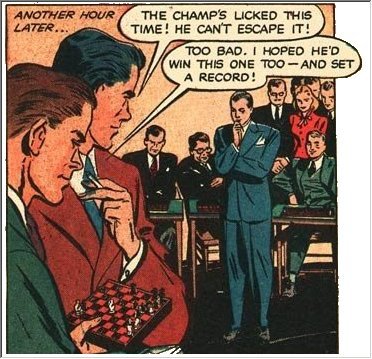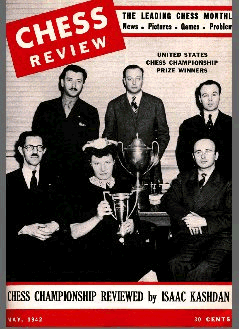This advert appeared after Arnold Denker won the USA Championship in 1944.

I have resized each pic to save your weary old eyes from squinting.






Do you think the artist has captured Denker in the drawing?

Here is the same picture blown up a bit so you can see Denker.

The position where Black gave up is here. (White to play)
The advert says 1.Nxg5 was played so let us have a look at it.
I found quite a few White checkmates with that mating pattern on Red Hot Pawn.
dawgdaddy - skunkk33 RHP 2005
It’s quite possible that Black got tempted into this line thinking the doubled a-pawn
cannot be stopped with a Rook hitting it from behind and so went for the promotion.
This next one also features the Knight Mate from the Camel advert.
doudlebsky100 - captaink RHP 2012
A Hall of Doom candidate. Actually I’m surprised it’s not already in there.
We round off with this wee Arnold Denker gem from his early years.
Arnold Denker - Harold Feit, New York 1929
The advert came from: Tartajubow Site

Been a while since we did one of these. Always good rewarding fun.
I can give a clue: ‘You might need a long think on the first move.’
White to play and mate in 3 moves by Sam Loyd, 1868.
Solution at the bottom of the page.


It is much easier to show what a Zwischenzug is rather
than explain it.. Here is an example from a master game
Edward Lasker - Frank Marshall, Match (3), New York 1923
Now two examples from RHP games with the exact same pattern.
Oprenovic - Skevara RHP 2011
This is the next one and the position is very close to the Lasker - Marshall game.
ElCuervo - Bombayviking RHP 2016

The Sam Loyd Solution. White to play and mate in 3 moves.
The thread accompanying this blog is Thread 177834

